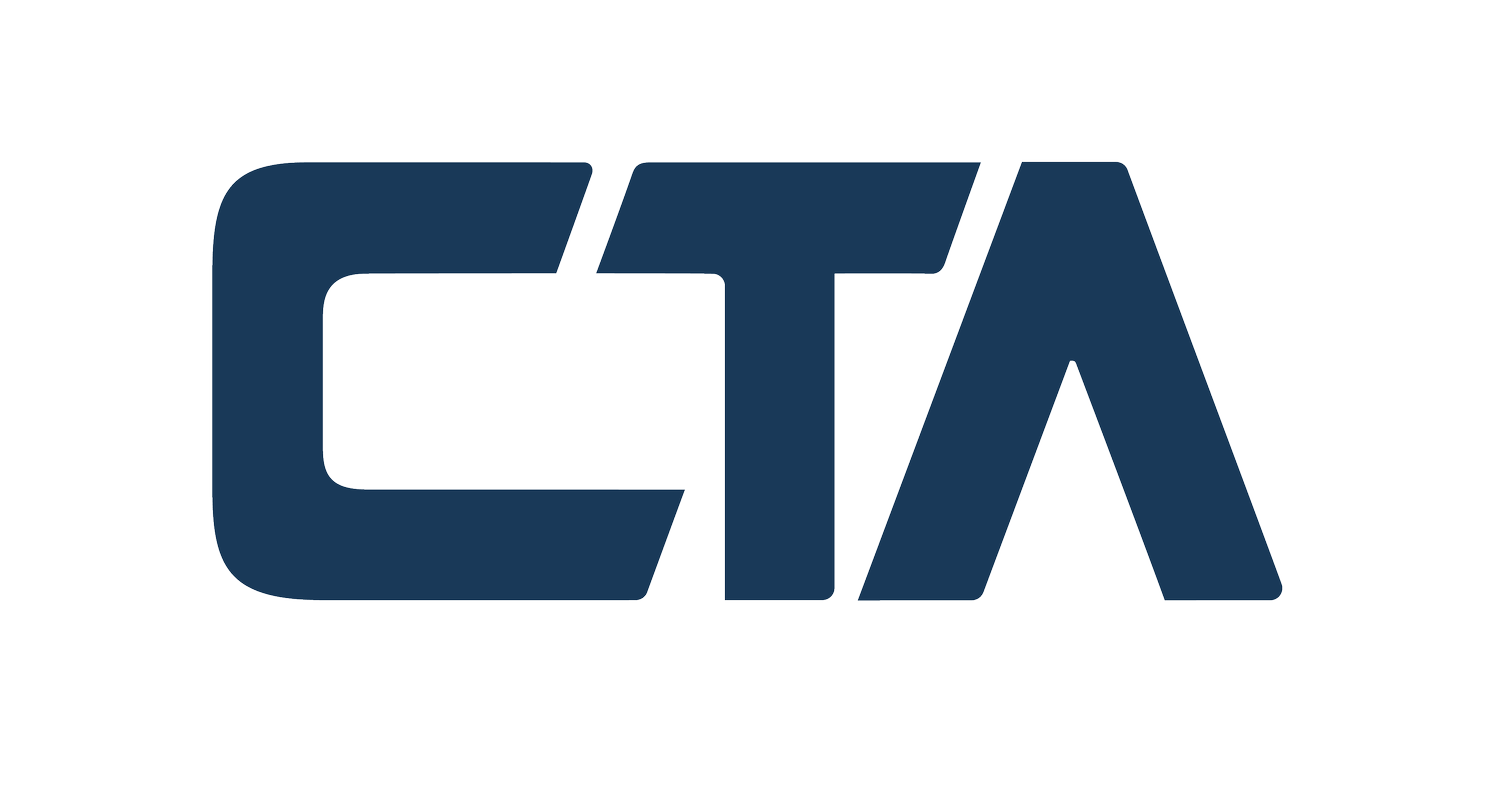New Congressional 2024 Tax Package Could Mean Big Changes to R&D & Other Credit Rules
By: Jordan Wilson, Dawson Fercho, & Eric Tuthill
1/31/2024
For both businesses and their CPAs, possible changes to how research expenditures are deducted could be around the corner if the guidance in the tax package framework being proposed by the House Ways & Means Committee and Senate Finance Committee makes its way into law.
This would be the first meaningful tax bill since 2017’s Tax Cuts and Jobs Act, commonly referred to as TCJA.
CTA’s Dawson Fercho, Eric Tuthill, and Jordan Wilson sat down to answer questions about what’s being proposed and how it would impact businesses currently using tax credits under their current guidelines.
Q: The treatment of R & D expenses would revert back to the pre-2022 way that the program was administered wherein “full expensing” is permitted. For those that are unaware of what section 174 is and its significance with regards to expensing R&D costs, what is the current expensing system and how has it changed?

A: “174” refers to Code Section 174.
In 2018, part of the Tax Cuts and Jobs Act (TCJA) legislation that passed included a provision to eliminate a particular statement under code section 41 that allowed a full and immediate deduction of code section 174 capitalized assets. It’s important to also note that taxpayers were always obligated to follow Section 174.
What changed specifically was that the election to automatically expense these costs under section 41 was removed. The change decision was made to counteract the longer-term effects of the tax cuts inherent in the bill, as an attempt to demonstrate that legislation was balanced, and the tax cuts were paid for.
Legislative understanding at the time was that the provision was needed to show balance; however, they delayed the implementation of the law until the 2022 tax year, assuming that they would be able to rectify the situation in subsequent bills. However, due to congressional inaction, this update to the code section was delayed and the code was allowed to come into effect for taxpayers beginning in 2022.
Code Section 174, originally legislated in the 1950’s, was created by congress to allow startup companies that were heavily invested in R&D to capitalize those investments and therefore demonstrate higher levels of profitability on their tax returns. Internal Revenue Code (IRC) Section 174 identifies costs that are allocable to R&D credits, including portions of overhead such as rent and insurance, and reduces what would have been a deduction in the current year in favor of an asset that is recoverable over a 5 year period, beginning at the mid-point of the associated tax year.
Due to the fact that Section 174 not only includes research expenses, but other allocated overhead amounts, the effect of the delay in rectifying the issue was incredibly dramatic for many taxpayers. Although a taxpayer “reclaims” these deductions over 5 years, the result of the timing difference created by allowing this mechanism to work was heavily increased tax liability for the first few years of its implementation. This led to unreasonably large, upfront tax bills. For many, the result of this legislation taking affect was an attack on the innovation component of American business.
It’s also important to note that IRC 174 is required, whereas IRC 41, the code section which governs the ability for a taxpayer to take a credit, is not. Companies engaging in properly classified research expenditures were forced to follow these methodologies, regardless of any pursuit of the credit in section 41.
Q: What does “full expensing” mean?
A: “Full expensing” in accounting refers to a tax policy or accounting method that allows a business to deduct the entire cost of a qualified asset in the year it is placed in service/realized. This means that the business can fully expense the cost of the asset immediately, rather than depreciating it over several years.
In this case, the R&D expenditures that would have been capitalized under IRC 174 and recovered over a 5 year period would immediately become fully deductible in the tax year the expenditures were incurred. This goes back to the normal status of research expenditures, and removes the disadvantages of the timing difference to a taxpayer’s liability. Basically, the percentage of wage deductions, rent, insurance, and other 174 costs that are removed from current year accounts to create an asset on the books would now be allowed to function as they previously did.
Key points about full expensing include:
Immediate Deduction: With full expensing, the entire cost of the qualified asset is deducted from the business’s taxable income in the year the asset is placed in service.
Stimulus for Investment: Full expensing is often implemented as a policy measure to stimulate business investment by providing an upfront tax incentive. It aims to encourage businesses to invest in capital assets, such as machinery, equipment, or other eligible property.
Section 179 Deduction: In the U.S., the Section 179 deduction is an example of a provision that allowed, PRIOR to 2022, for full expensing. It typically applies to tangible personal property used in business, and businesses can deduct the full cost of qualifying assets, subject to certain limits.
Q: In terms of business cash flow, what would change about the impact of a successful R & D tax study and filings?
A: Fundamentally, when you pay less taxes, you have more cash on hand to invest in growing the business. If what is proposed happens, businesses that get an R&D tax credit study and make the filings will have even greater immediate tax savings.
With IRC 174 in place (present reality), the timing difference created from the section results in a few years of outflows to cover liability, before righting itself to positive cash flow territory, if, and only if, the taxpayer is appropriately utilizing the credit allowable in IRC 41.
The elimination of this provision (in the proposed bill) removes the timing difference, immediately allowing the taxpayer to fully benefit from IRC 41 and the tax credit.
Q: For a company that has completed their filings for 2022, what would happen if full expensing is restored?
A: 2022 taxpayers were forced by this legislation to execute an accounting method change for tax purposes. Draft legislation in HR 7024 has indicated that an election out of 174 would be considered an essential reversion from this method.
The legislation currently indicates that reclaiming these past deductions will be through what is called a section 481(a) adjustment on the taxpayer’s 2023 return.
To say that in simpler terms, the issue will be fixed/a method of retrieval enacted on the 2023 taxpayer’s return for those previously capitalized expenses.
The IRS does not want thousands and thousands of amended returns, so if you’re working on your 2023 tax returns and “full expensing” is approved, you’ll get the benefit of it for both 2022 and 2023.
Q: The proposal suggests full expensing will be allowed through Jan 1st, 2026. What are the possibilities thereafter?
A: I would use Section 41 (treatment of contracted R&D work carried out in a subsequent period) as an analogy. That program’s code section was renewed between 15 to 20 times prior to permanent codification in 2016.
Like the R&D, Section 174 has become the newest political football and will be in legislation proposals for the foreseeable future. Will it be permanently remedied to reflect how research expenses were handled prior to 2022? Great chance.
Unfortunately, this legislation represents another “kick the can down the road” approach. Congress has pushed it forward as it once again wishes to create balance within the tax structure. Congress has many alternatives ahead of it, but it is likely that legislation with offsets will be in the near future, with either an elimination of other types of deductions or increases in tax.

Due to active lobbying from frustrated taxpayers, the optics of IRC 174, and how 2022 unreasonably affected business, Congress is much more heavily invested in correcting this issue permanently. It is in the best interest of taxpayers to continue to influence and request that their representatives take permanent action.
It’s important to note that IRC 174 does not remove the effectiveness of research for the business or for the credit itself; it just unfortunately creates a period of time where liability shifts to outflows instead of all inflows.
But there is also the chance 174 finally and permanently becomes the law of the land. Only time will tell.
Q: What else should businesses be aware of as they think about their R & D tax planning for 2023?
A: For most taxpayers, the biggest issue that they run into is identifying and calculating research costs, which will maximize their benefits.
A thorough understanding of the four-part test and how it interacts with a taxpayer’s projects will be crucial in identifying these costs.
If a taxpayer has not taken the credit before, this is an excellent opportunity to investigate it’s application in a taxpayer’s business, as with these legislative changes the credit continues to be one of the best tax credits to fund the future of the business. Looking forward into 2024, documentation of these events will also be crucial in order to maximize taxpayer credit as IRC 174 would be eliminated in the new legislation.
There are also a number of developments to keep an eye on:
Legislative Changes: Stay informed about any legislative changes that may impact R&D tax credits. Tax laws can evolve, and understanding the current environment is crucial for effective planning.
Eligible Activities: Ensure that your business is accurately identifying and documenting eligible R&D activities. This includes research to develop new products, processes, or software, as well as improvements to existing products or processes.
Documentation: Maintain detailed documentation of R&D activities and associated expenses. Proper record-keeping is essential for substantiating claims during audits and ensuring compliance with tax regulations.
Wages and Supplies: Pay attention to the inclusion of qualified wages and supplies in your R&D tax credit calculation. These costs are often significant components of the credit.
Startups and Small Businesses: Understand the special provisions available for startups and small businesses, such as the ability to offset payroll tax liabilities with R&D tax credits for certain qualifying companies.
State Credits: Be aware of state-level R&D tax credits, as they may complement federal credits. Each state may have its own rules and criteria for R&D tax incentives.
Alternative Simplified Credit (ASC): Consider whether utilizing the ASC method for calculating the credit is more beneficial for your business. The ASC method simplifies the calculation but may not be optimal for all situations.
Collaborative Research: If your business engages in collaborative research activities with other entities, understand the rules and regulations regarding claiming R&D tax credits for collaborative projects.
Global Considerations: For multinational companies, evaluate how global R&D activities may impact overall tax planning. Consider any implications of international tax rules on your R&D tax credit.
Consultation with Experts: Engage with tax credit advisors who specialize in R&D tax planning. They can provide tailored advice based on the specific circumstances of your business and help optimize your tax strategy.
It’s important for businesses to proactively assess their R&D activities, stay informed about tax law changes, and leverage available credits to support innovation and growth. Consulting with tax professionals can provide valuable insights and ensure compliance with evolving regulations.
Q: There’s also a provision to make some changes to the Employee Retention Credit…What are they?
A: A taxpayer, in general, has three years from a timely filed return to amend their returns and claim a credit or a refund of tax (we call these Statutes of Limitation in the tax world).
The Employee Retention Credit (ERC) is based on payroll tax filings that were made quarterly throughout the 2020 and 2021 tax seasons. Payroll filings, for amended purposes, are considered timely filed as of the 15th day of the fourth month following the applicable tax year.
In this case, that would mean an essential deadline of 4/15/2024 for amended 2020 filings, and 4/15/2025 for amended 2021 filings.

HR 7024, the draft legislation, indicates that congress has decided to end new claims for the program, essentially moving the above dates immediately forward. HR 7024 had an initial ending date of January 31st, 2024, although it has appeared to somewhat stall in the senate, and that date will likely be on or very near the date the bill may eventually get passed.
If you are a taxpayer that has not yet investigated the ERC, believing that you had additional time to evaluate the credit, you will miss the opportunity to apply for the credit if the bill passes as expected. Taxpayers should investigate whether the credit applies to them immediately or they will likely lose their ability to apply.
In addition, the legislation includes a component allowing taxpayers to amend their income tax returns and reclaim deductions if the credit is subsequently denied in an exam, as well as an increase in the assessment window (the time period the IRS can look at the returns), and reporting requirements for ERC consultants.
For business that are concerned about what they already filed, CTA has been providing an ERC Substantiation Report service that helps a business understand whether it should pull back its claim and that’s not recommended, provides supporting documentation to confirm correct calculations in what was already filed.
Q: How will these changes impact companies who may have made fraudulent claims?
A: Specifically, components of the legislation have been created to help the IRS identify fraudulent promoters. One of the issues that the IRS faces is that the IRS and current ERC structure only currently allows the IRS to focus on taxpayers and not preparers. The additional legislation requires ERC credit consultants to be identified and gives the IRS the means to help identify fraudulent and less diligent preparation services more easily.
Q: For businesses that are concerned that whoever helped them file ERC may not have been “on the level,” what steps are recommended?
A: In general, the majority of these popup shops are clearly identifiable due to the low quality of work and the lack of professional presence. The eligibility process for taxpayers that did not originally qualify under the gross receipts may be problematic for taxpayers that utilized firms that did not have CPAs and other professionals on staff to appropriately evaluate the context of their eligibility through the legislation and notices provided by the IRS.
If you believe you may have unknowingly gotten involved with one of these providers, or have questions that they are not openly responding to, it would be your duty as a taxpayer to avoid penalties, interest, and, in the worst case, claims of fraud by re-evaluating your qualifications and having all your basis covered in the event of a possible exam by the IRS.
CTA has noted the need for this, and due to the expertise we have built up in the area, are offering ERC Substantiation Reports, which evaluate a taxpayer’s eligibility for the credit in the context of the published law and regulatory environment. CTA is currently offering a free, high level assessment as to the likely quality of study the taxpayer engaged in with one of our CPA team.
Q: If a business unknowingly overclaimed credits, can they amend their returns?
A: The IRS has offered a mitigation program for folks that may have overclaimed the credit. As each situation may be different, and many more taxpayers are likely to still be qualified but without compiled and needed documentation support, the situation would need to be analyzed by the taxpayer to understand the best method available for mitigation, or if mitigation is even needed.
The ERC Substantiation Report that CTA provides delves more thoroughly into these options for the taxpayer and provides a recommended course of action based on the employer’s qualifications.
Q: For any business who received ERC, are they likely to be audited?
A: Even with the incredible expansion that the IRS has undergone since their increase in funding, it is incredibly unlikely that the majority of claims will be extensively examined. It’s hard to tell exactly how the IRS will handle this; however, it is likely that a small core of examiners with expertise in the subject will continue to administer exams through the increased assessment period for this credit.
It is more likely that the IRS will be focused on bad preparers and consultants and on obvious frauds and scammers rather than individual taxpayers that tried to do the right thing in regards to the credit.
That’s why we believe that it is important that if a taxpayer thinks that they may have gotten looped in with a service provider like that, regardless of the validity of the credit, the taxpayer should be prepared for a possible exam.
Q: For businesses that want what they were owed, no more, no less, what steps can they take to ensure their paperwork is order and claims are defensible?
A: In the case of a partially suspended taxpayer, the taxpayer will need to substantiate with the IRS a government order that was involuntary in nature and gave rise to a 10% reduction in gross receipts or employee service hours. As this argument is based on the taxpayer’s “facts and circumstances,” it is important that these are outlined within the context of the law and various legislative instances. Supply chain required documentation has been substantially increased due to an IRS General Legal Advice Memo dropped mid-summer of 2023, so if the qualification is based on that, more documentation will be needed.
CTA prepared and outlined the ERC Substantiation Report for this very reason. The report analyzes a business’s eligibility and compares it to their provider, gives the background of the law and why a claim for a particular period is defensible and what aspects of the law make it so, and provides government orders and exam level arguments for those that would qualify under partial suspension of operations or under supply chain issues.
Q: Are there any other tax credit matters that impact businesses proposed in the new tax package?
A: 100% bonus depreciation has a piece in the new bill which is great for cost segregation studies. If that passes, the short-term tax savings from cost segregation will increase dramatically as 100% can be used an expense.
There is also a component about business interest limitations that will be altered.
The child tax credit will be increased with the legislation – how much is apparently currently being argued by the Senate.
Q: For CPAs or businesses who need help with R&D or ERC matters, what type of assistance does CTA provide?
A: CTA is focused strictly on credits and incentives and offers a no-cost preliminary analysis to anyone looking to determine eligibility and for more information on how to claim certain incentives.
Our tagline “Solutions to Fund Your Future” promotes our intention – to find the tax credits and incentives available to help free up cash and help the business grow. Many of the opportunities we find are enough to support additional employees, buy the material you need for the next venture, or rewards ownership for the risk taking they are doing in their business.
For eligible companies that want to proceed, our team of accountants, attorneys, and engineers then conduct the detailed studies and create the documentation for each of the nuanced credits we support.
A business’s primary CPA is still managing overall tax strategy. We function as the advisor’s advisor; our expertise in certain sections of the code allows CPAs to focus on other areas of the taxpayer’s business while ensuring that their client receives the same high standards they subject themselves to.
For the businesses we work with, we ensure proper documentation of their credit components and excellent defense of the credits and incentives should the IRS examine the claims.
Q: What’s the best way to get questions answered about the topics covered in this article?
A: We provide 1-on-1 meetings on most business meetings. We’re happy to discuss a particular business.
To book a 1-on-1, please grab a convenient time with Jordan Wilson: https://corporatetaxadvisors.com/schedule-jordan-wilson/
For CPA’s, these conversations can be more of a refresher on whichever of our six specialty areas they would like to discuss.
For ongoing training, we would also like to encourage you to attend our bi-weekly webinar series (starting in February).
If you haven’t already, we would also suggest subscribing to our newsletter (there’s a form at the bottom of this page).
And for breaking news, follow our LinkedIn page.








